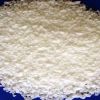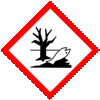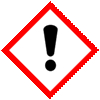Search for the supplies that you need here:
DMF Support and Documentations Available | |
 WHO-GMP Certified Good Manufacturing Practice Certified by World Health Organization |  WC, Written Confirmation for Active Substance to be imported into European Union (EU). |
Potassium Oleate SDS of Manufacturers
Anmol Chemicals is a manufacturer supplier exporter of Potassium Oleate and it offers materials as per IP BP EP Ph Eur USP NF JP FCC Food Grade as per the the latest monograph at best prices. Anmol Chemicals Group, established in 1976, is the pioneer manufacturer of Specialty Chemicals, Pharmaceutical Excipients, Some API, Food Chemicals in India. Anmol Chemicals Group has manufacturing facilities spread across Western India, representatives in Houston, Chicago USA and Dubai, UAE. We also have toll manufacturing units for processing chemicals in a few countries around the world. We make IP, BP, EP, USP, NF, Ph. Eur., JP, FCC or Food Grade, Analytical Reagent Grade, LR or Laboratory Reagent Grades and Pure Grades of various chemicals. All our items are analyzed to meet the required standards. We can supply the product in grams for your laboratory trial and in tons for your plant scale jobs.
We manufacture Bulk Drugs / API, Excipients, Pharmaceuticals (IP BP USP NF Ph Eur EP JP), Specialty Chemicals (Pure/Reagent), Mineral Fortifiers (FCC). Our manufacturing facility is FDA approved and GLP, cGMP, ISO9001, ISO14001, ISO/IEC 17025, ISO22000, FSSC 22000, ISO45001, FSSAI, Kosher, HALAL, COPP, WHO-GMP certified and Written Confirmation (WC) is available. Solid materials can be customized for particle size, shape, and bulk density. We observe WHO Good Manufacturing Practices and Good Laboratory Practices. We are a government-recognized STAR Export House and "Authorised Economic Operator (AEO)" per Indian Customs.
All technical documents and DMF support available.
Potassium Oleate Specifications of Manufacturers

Potassium Oleate SDS GHS, Safety Data Sheet
MSDS Sheet, Material Safety Data Sheet
1. Product Identification
Product Name & Other Names: Potassium Oleate or Oleic acid potassium salt.
CAS No.: 143-18-0 (also 1323-38-2)
EINECS: EC Number: 205-590-5
Molecular Weight: 320.55
Chemical Formula: C18H33KO2
Relevant uses and uses advised against (if any): Industrial use only.
Supplier: As per letterhead.
2. Hazards Identification
GHS, Globally Harmonized System Classification in accordance with 29 CFR 1910
Classification according to Regulation (EC) No 1272/2008
Skin corrosion/irritation Category 2
Serious eye damage/eye irritation Category 2A
Specific target organ toxicity, single exposure; Respiratory tract irritation Category 3
Acute aquatic toxicity Category 1
Labeling Regulation EC 1272/2008 (CLP) & GHS
GHS Label Elements  Aquatic Toxicity | GHS Label Elements  Irritant |
Signal Words: Warning
Hazard statements:
H315: Causes skin irritation.
H319: Causes serious eye irritation.
H335: May cause respiratory irritation.
H400: Very Toxic to aquatic life.
Precautionary statements:
P260: Do not breathe dust/fume/gas/mist/vapors/spray.
P262: Do not get in eyes, on skin, or on clothing.
P264 Wash thoroughly after handling.
P273: Avoid release to the environment.
P280: Wear protective gloves/protective clothing/eye protection/face protection.
P314: Get medical advice/attention if you feel unwell.
P302+P352: IF ON SKIN: Wash with plenty of soap and water.
P305+P351+P338: IF IN EYES: Rinse cautiously with water for several minutes. Remove contact lenses, if present and easy to do. Continue rinsing.
P362: Take off contaminated clothing and wash before reuse.
P332+P313: If skin irritation occurs: Get medical advice/attention.
P337+P313: If eye irritation persists: Get medical advice/ attention.
P391: Collect spillage.
P405: Store locked up.
P501: Dispose of contents/container in accordance with local/regional/national/international regulation.
Classification according to EU Directives 67/548/EEC or 1999/45/EC:
Hazard Symbols:
Xi Irritant
N Dangerous for the environment
Risk Phrases:
R36/37/38 Irritating to eyes, respiratory system, and skin
R51 Toxic to aquatic organisms.
3. Composition/Information on Ingredients
Product Name & Other Names: Potassium Oleate or Oleic acid potassium salt.
CAS No.: 143-18-0 (also 1323-38-2)
EINECS: EC Number: 205-590-5
Percent: 30% - 100%
4. First Aid Measures
Always seek medical attention after first aid measures are provided.
Inhalation: Remove to fresh air. If not breathing, give artificial respiration. If breathing is difficult, give oxygen. Get medical attention.
Ingestion: Never give anything by mouth to an unconscious person. Get medical attention.
Skin Contact: Wipe off excess material from skin then immediately flush skin with plenty of water for at least 15 minutes. Remove contaminated clothing and shoes. Get medical attention. Wash clothing before reuse. Thoroughly clean shoes before reuse.
Eye Contact: Immediately flush eyes with plenty of water for at least 15 minutes, lifting lower and upper eyelids occasionally. Get medical attention immediately.
5. Fire Fighting Measures
Flammability of the Product: May be combustible at high temperature.
Products of Combustion: Potassium oxide, Carbon dioxide, Carbon monoxide, fumes.
Fire Extinguishing Media: Use means suitable for extinguishing surrounding fire. Use water spray, alcohol-resistant foam, dry chemical or carbon dioxide.
Special Information: In the event of a fire, wear full protective clothing and NIOSH-approved self-contained breathing apparatus with full face piece operated in the pressure demand or other positive pressure mode. At high temperatures or when moistened under fire conditions, it may produce toxic or irritating fumes. On decomposition it may emit hydrogen chloride. Containers may explode on heating
6. Accidental Release Measures
Personal precautions, protective equipment, and emergency procedures: Avoid breathing dust/fumes/gas/mist/vapors/spray. Use individual protective equipment (waterproof boots, suitable protective clothing, safety glasses, etc). Restrict unprotected personnel from the area. Prevent any contact with hot surfaces. Do not approach facing the wind. Do not touch the spilled material.
Environmental precautions: Do not let the product enter drains, soil, or water sources.
Methods and materials used for containment Cleanup procedures and Storage:
Small Spill: Avoid dust/mist formation. Avoid breathing dust/mist. Ensure adequate ventilation. Use appropriate tools to put the spilled solid in a convenient waste disposal container. Finish cleaning by spreading water on the contaminated surface and dispose of according to local and regional authority requirements.
Large Spill: Contain spilled material. Avoid touching the spilled material. Do not let the product enter drains. Use a shovel to put the material into a convenient waste disposal container. Do not contaminate the environment.
7. Handling and Storage
Precautions for safe handling: Apply according to good manufacturing and industrial hygiene practices. Ensure proper ventilation. Provide appropriate exhaust ventilation at places where dust is formed. Wash thoroughly after handling. Do not drink, eat, or smoke while handling. Avoid contact with skin, eyes, and clothing. Minimize dust generation. Avoid breathing dust/fumes/gas/mist/vapors/spray. Avoid contact with eyes, skin, and clothing. Keep container tightly closed. Avoid ingestion and inhalation. Use individual protective equipment (waterproof boots, suitable protective clothing, safety glasses, etc). Prevent any contact with hot surfaces.
Conditions for safe storage, including any incompatibilities: Store in cool, dry, and ventilated area away from heat sources and protected from sunlight in tightly closed original container. Keep air contact to a minimum. Do not leave the material container open. Store protected from heat, sparks and ignition sources and incompatible materials. Avoid contact with skin and eyes. Avoid inhalation of dust/mist/vapor. Do not store with incompatible materials like strong oxidizing agents, reducing agents.
8. Exposure Controls/Personal Protection
Airborne Exposure Limits: Not Established.
Ventilation System: A system of local and/or general exhaust is recommended to keep employee exposures as low as possible. Local exhaust ventilation is generally preferred because it can control the emissions of the contaminant at its source, preventing dispersion of it into the general work area.
Personal Respirators (NIOSH Approved): For conditions of use where exposure to dust or mist is apparent and engineering controls are not feasible, a particulate respirator may be worn. For emergencies or instances where the exposure levels are not known, use a full-face positive-pressure, air-supplied respirator.
Skin Protection: Wear protective gloves and clean body-covering clothing.
Eye Protection: Use chemical safety goggles and/or full face shield where dusting or splashing of solutions is possible. Maintain eye wash fountain and quick-drench facilities in work area.
Other Control Measures: Maintain good housekeeping in work area. Handle in accordance with good industrial hygiene and safety practice. Wash hands after handling.
9. Physical and Chemical Properties
Appearance: Viscous liquid or Clear Brown Liquid to Clear Amber Yellow Liquid paste, depending on percentage of active matter or beige powder depending on dilution.
Odor: Soap odor.
Odor threshold: Not available.
pH: 8 to 11.
Relative density: Varies with assay.
Melting point/freezing point: Not available.
Boiling Point: >100C
Flash Point: >100C
Auto-ignition temperature: Not available.
Decomposition temperature: Not available.
Upper/lower flammability or explosive limits: Not available.
Vapor pressure: Not available.
Vapor density: Not available.
Evaporation rate: Not available.
Flammability (solid, gas): Not available.
Partition coefficient: n-octanol/water: Not available.
Solubility: Soluble in water.
Viscosity: Not available.
Molecular Weight: 320.55
Chemical Formula: C18H33KO2
10. Stability and Reactivity
Stability: Stable under ordinary conditions of use and storage.
Hazardous Decomposition Products: It emits Potassium oxide, Carbon dioxide, Carbon monoxide & Fumes.
Hazardous Polymerization: Will not occur.
Incompatibilities: Strong oxidizing agents, reducing agents.
Conditions to Avoid: Incompatibles and heat.
11. Toxicological Information
Toxicity data
LD50 Oral - Rat - > 5,000 mg/kg (Potassium oleate)
LD50 Dermal - Rat - > 2,000 mg/kg (Potassium oleate)
Carcinogenic Effects: No component of this product at levels greater than 0.1% is identified as carcinogenic by IARC, ACGIH, or OSHA.
Mutagenic Effects: Not available.
Teratogenic Effects: Not available.
Developmental Toxicity: Not available.
12. Ecological Information
Potassium salts of fatty acids are known to be toxic to aquatic invertebrates.
Toxicity to fish: LC50 - Oryzias latipes - 5,3 mg/l - 48 h
Toxicity to daphnia and other aquatic invertebrates: EC50 - Daphnia magna (Water flea) - 0,57 mg/l - 48 h.
Products of Biodegradation: Possibly hazardous short term degradation products are not likely. However, long term degradation products may arise.
Results of PBT and vPvB assessment: This substance/mixture contains no components considered to be either persistent, bioaccumulative and toxic (PBT), or very persistent and very bioaccumulative (vPvB) at levels of 0.1% or higher.
13. Disposal Considerations
Whatever cannot be saved for recovery or recycling should be managed in an appropriate and approved waste disposal facility. Processing use or contamination of this product may change the waste management options. State and local disposal regulations may differ from federal disposal regulations. Dispose of container and unused contents in accordance with federal, state, and local requirements.
14. Transport Information
USA DOT & ADR/RID Classification:
UN number: 3077
UN proper shipping name: ENVIRONMENTALLY HAZARDOUS SUBSTANCE, SOLID, N.O.S. (Potassium oleate)
Transport hazard class(es): 9
Packaging group: III
Canada TDG Classification:
UN number: 3077
UN proper shipping name: ENVIRONMENTALLY HAZARDOUS SUBSTANCE, SOLID, N.O.S. (2,6-di-tert-Butyl-p-cresol)
Transport hazard class(es): 9
Packaging group: III
IMDG & IATA
UN number: 3077
UN proper shipping name: ENVIRONMENTALLY HAZARDOUS SUBSTANCE, SOLID, N.O.S. (2,6-di-tert-Butyl-p-cresol)
Transport hazard class(es): 9
Packaging group: III
15. Regulatory Information
USA:
SARA 302 Components : No chemicals in this material are subject to the reporting requirements of SARA Title III, Section 302.
SARA 313 Components : No chemicals are reportable under Section 313.
SARA 311/312 Hazards: Acute Health Hazard.
California Proposition 65: Not listed.
Section 16 - Additional Information
European Labeling in Accordance with EC Directives:
H315: Causes skin irritation.
H319: Causes serious eye irritation.
H335: May cause respiratory irritation.
H400: Very Toxic to aquatic life.
Classification according to EU Directives 67/548/EEC or 1999/45/EC:
Hazard Symbols:
Xi Irritant
N Dangerous for the environment
Risk Phrases:
R36/37/38 Irritating to eyes, respiratory system, and skin
R51 Toxic to aquatic organisms.
DISCLAIMER: The information and recommendations set forth herein are presented in good faith and believed correct as of the date hereof. It is compiled from various sources and it is not necessarily all inclusive nor fully adequate in every circumstance. In addition, these suggestions should not be confused with nor followed in violation of applicable laws, regulations, rules or insurance requirements applicable. This MSDS sheet is intended only as a guide to the appropriate precautionary handling of the material by a properly trained person using this product. Individuals receiving the information must exercise their independent judgment in determining its appropriateness for a particular purpose.



Manufacturer Supplier Exporter
ANMOL CHEMICALS Private Limited
Representatives in Houston, Chicago and New York, USA
TEL: (OFF) +91 22 23726950, +91 22 23774610, +91 22 23723564
Taloja Navi Mumbai, Banglore, INDIA
e-mail: info@anmol.org
Copyright and Usual Disclaimer is Applicable
Last updated 21-oct-25
Exporters to USA, Canada, UAE, Kuwait, Qatar, Gautemala, Tunisia, Europe, South Africa, Bangladesh, Sri Lanka, Tanzania, Kenya, Egypt, Iraq, Turkey, Israel, Vietnam, Nigeria, Uganda, Brazil, Chile, Argentina, Dubai, UAE, Saudi Arabia, Cameroon, Mexico, Brazil, Chile, Argentina, Korea, Thailand, Malaysia, Indonesia, Jakarta, Australia, China, Germany, France, etc.
Representatives in New York, Houston - Texas, Chicago - Illinois, Los Angeles.
All products are Sold for Industrial and Laboratory Use only.
Fast Selling IP BP Ph Eur EP USP NF JP Analytical Reagent FCC Food Grades of Chemicals by Anmol Chemicals
Ammonium Persulfate --- Acetic Acid Glacial --- Aluminum Chloride --- Ammonium bicarbonate --- Benzyl Alcohol --- Butylated Hydroxyanisole --- Butylated Hydroxytoluene --- Boric Acid --- Calcium Butyrate --- Calcium Chloride --- Calcium Hydroxide --- Calcium Lactobionate --- Calcium Saccharate --- Carbamide Peroxide --- Calcium Oxide --- Calcium Sulfate --- Chromic Chloride --- Fumaric Acid --- Magnesium Butyrate --- Magnesium Chloride --- Magnesium Sulfate --- Malic Acid --- Maleic Acid --- Manganese Chloride --- Manganese Sulfate --- Octyldodecanol --- Oleic acid --- Phenylethyl Alcohol --- Propylene Carbonate --- Potassium Hydroxide Pellets --- Potassium Alum --- Selenious Acid --- Sodium Acetate --- Sodium Bromate --- Sodium Selenite --- Sodium Perborate --- Sodium Hydroxide --- Sodium Sulphate --- Sodium Sulfide --- Sodium Thiosulfate --- Urea --- Zinc Chloride --- Zinc Sulphate ---


















